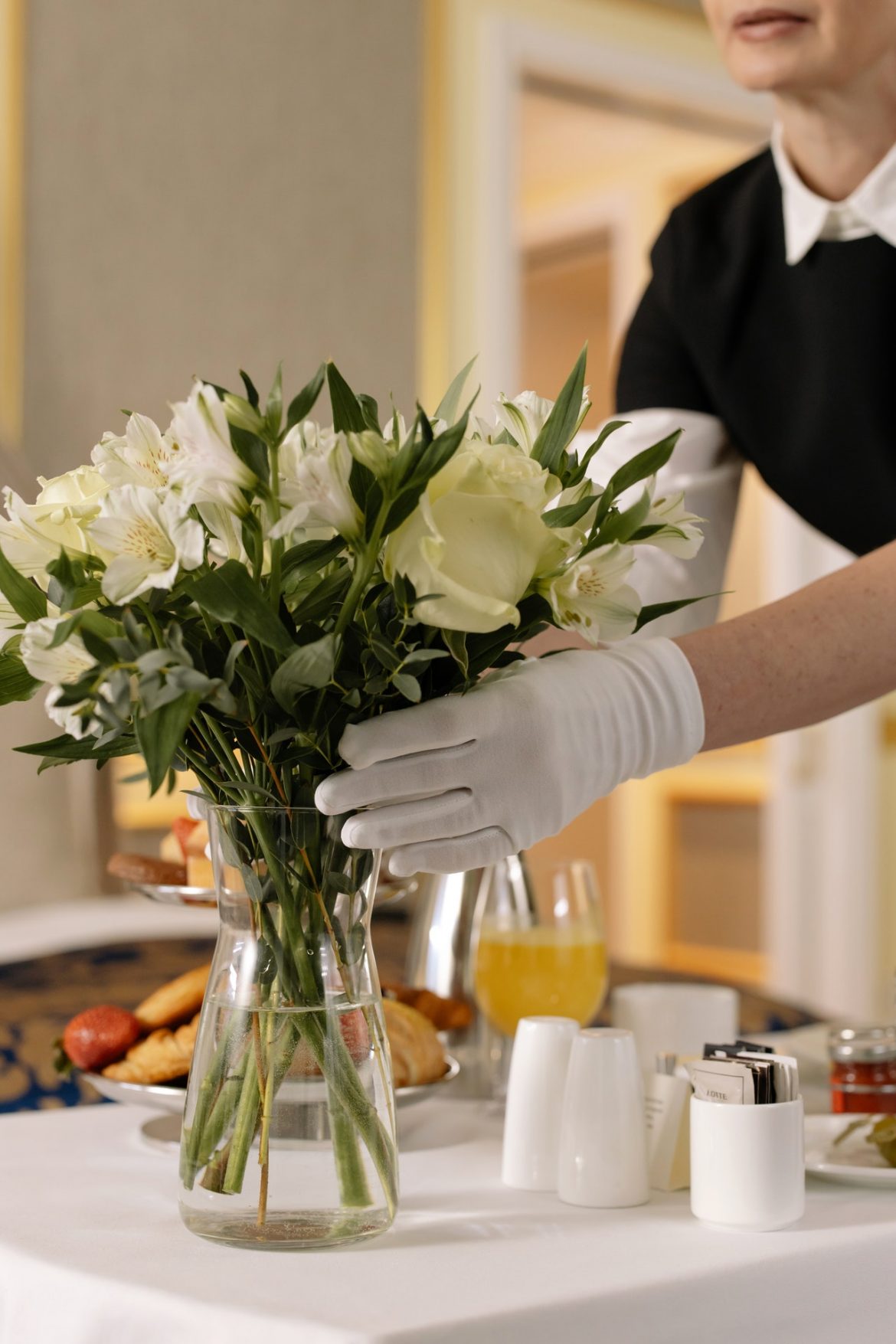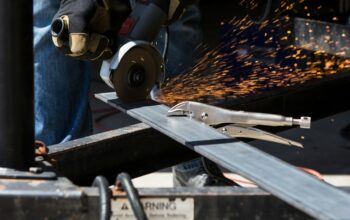As housekeepers conduct most of their work out of the sight of customers, their uniforms don’t tend to get as much attention as those of other roles.
However, housekeeping workwear is just as essential as any other, and it has many considerations that need to be taken into account. The uniforms need to keep the wearer safe, comfortable and conform to industry regulations. Broken down by area of the body, this article outlines how housekeeping uniforms keep you safe at work.
Upper body
Consisting of the head, torso, arms and hands, it’s essential the upper body is kept safe when on shift. Below are the main items of clothing that can keep these areas of the body protected.
Tunic
Tunics are a popular choice for housekeepers to wear, and for a good reason: they’re practical, smart and easy to care for. The best tunics for workwear are made from a lightweight polyester/cotton blend material as it keeps the wearer cool on shift while being able to withstand wash after wash. Many of the best tunics also have short sleeves that allow for ease of movement and stop the fabric from getting in the way of manual jobs.
In terms of safety, a high-quality tunic should be made from a tough, durable fabric that provides protection from spills of cleaning chemicals on the skin. The best tunics will also be machine washable up to 60ºC to get rid of any bacteria or viruses which could cause an infection.
Gloves
An essential accessory for housekeepers, the correct gloves provide a barrier between the wearer and infectious substances, or harsh cleaning chemicals that can dry out the skin. Housekeepers can choose between disposable gloves which they can switch between shifts – ideal for working in times of COVID-19 outbreaks – or heavy-duty ones for tasks that require more force.
Face mask
For housekeeping jobs that use sprayed cleaning chemicals or aerosols, face masks are essential. The correct face-covering prevents the wearer from breathing in harsh chemicals that can damage the lungs. Housekeepers should also wear a face-covering in times of COVID-19 to help slow the spread of infection around their workplace.
Lower Body
Consisting of the legs and feet, the lower body comes into close contact with any floor spillages so needs to be properly protected.
Trousers
A good pair of trousers for housekeepers prioritises comfort and safety above all other aspects. As the role requires a lot of bending and twisting, good housekeeping trousers are well-fitted and allow for a lot of movement – often they’ll have an elasticated waist. The trousers should also be made from a lightweight, durable material that keeps the wearer cool while maintaining a barrier between the skin and any chemicals or infectious substances.
Disposable apron
Many housekeepers choose to use disposable aprons between shifts. Made of plastic, they provide a waterproof barrier between all surfaces and the wearer for added protection. Aprons have the added benefits of protecting the rest of the wearer’s uniform from spillages, making garments last longer.
Shoes
The final element of any housekeeping uniform is shoes, which again have to prioritise comfort and safety. A good pair of shoes have to be comfortable to wear by offering the right level of support for foot arches and shins, otherwise housekeepers might damage their feet, legs and back.
Aside from personal comfort, housekeeping shoes should be slip-resistant to protect against slipping on cleaning chemical spills. They might also need to have a steel toe cap for handling heavy equipment or deliveries of supplies. Housekeepers should check the industry requirements of their safety shoes before purchasing them.
Housekeeping uniforms have many ways they keep you safe. In general, good uniforms protect you from chemicals and infectious substances, keep you comfortable and make sure they don’t damage your body. When purchasing a new housekeeping uniform, you should first make sure a garment meets all of the above requirements and conforms to the sector regulatory guidelines, then consider styling and business branding.




